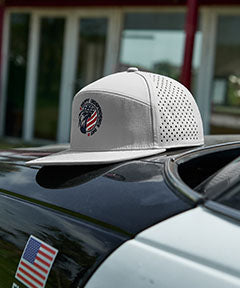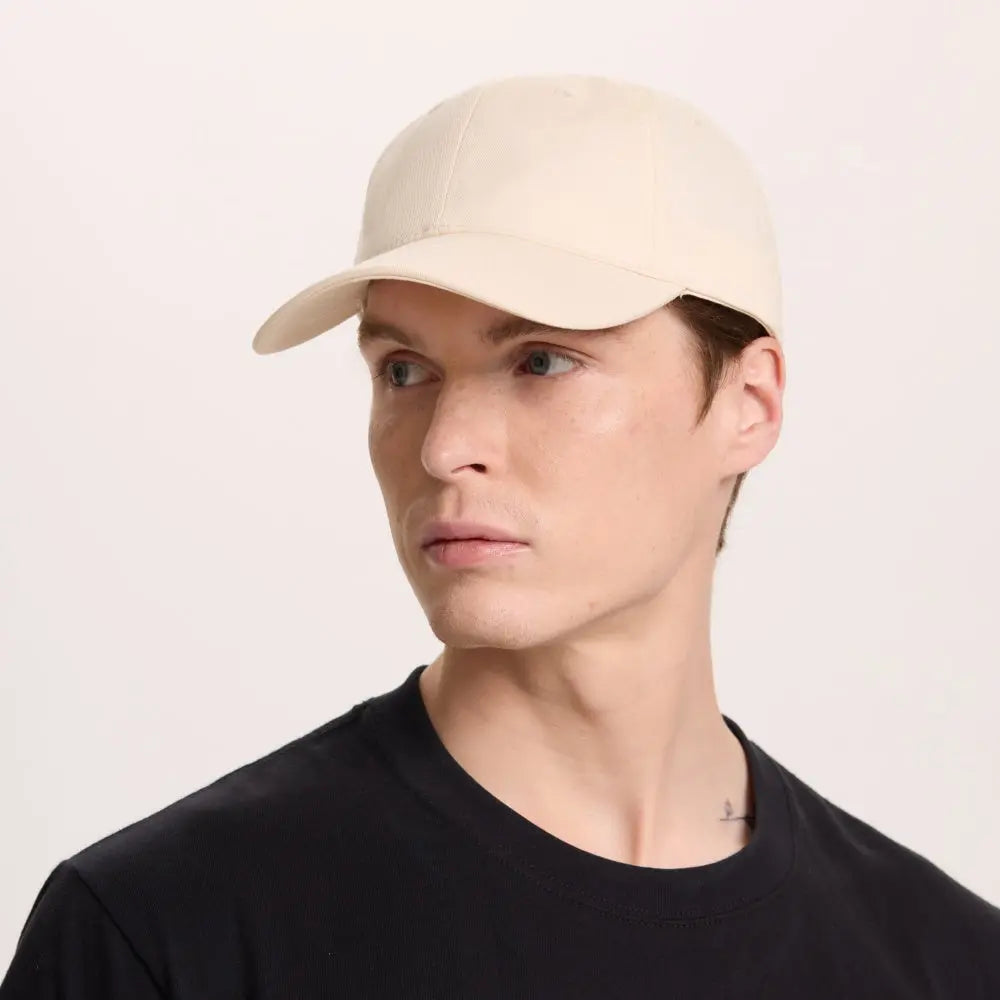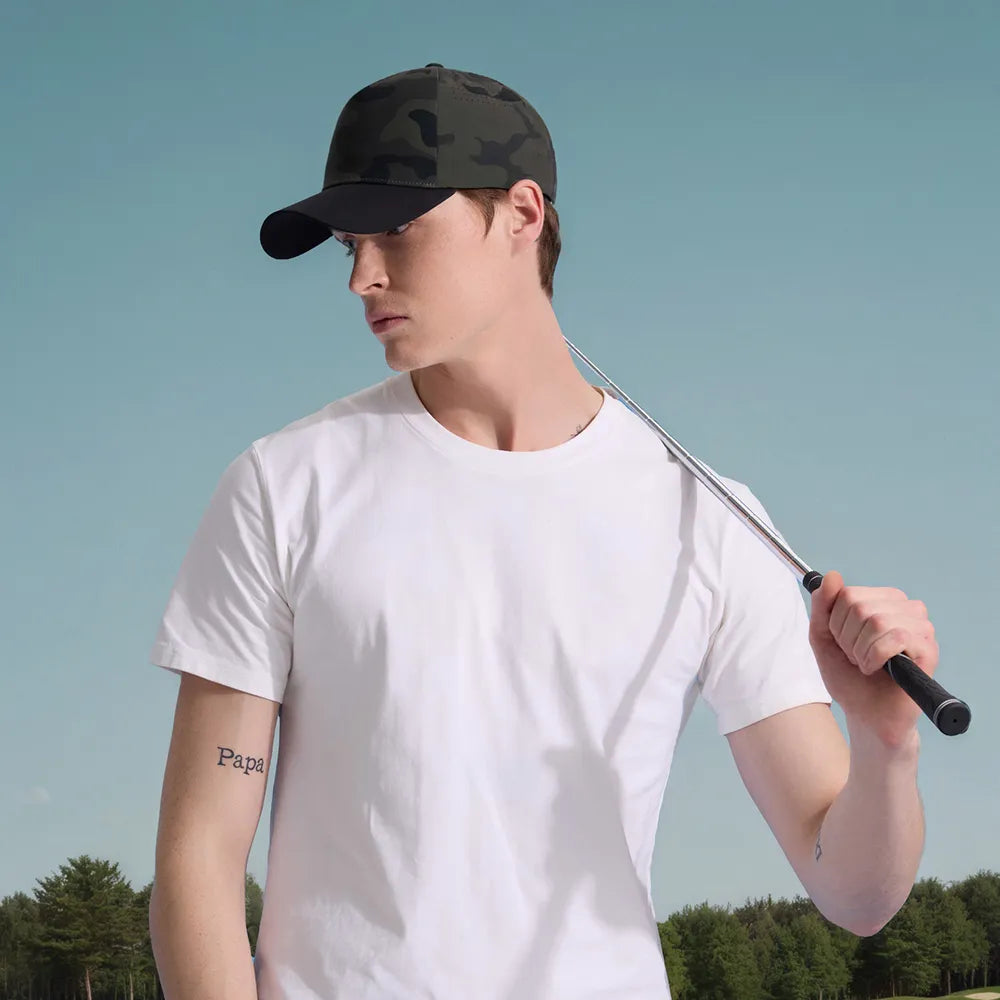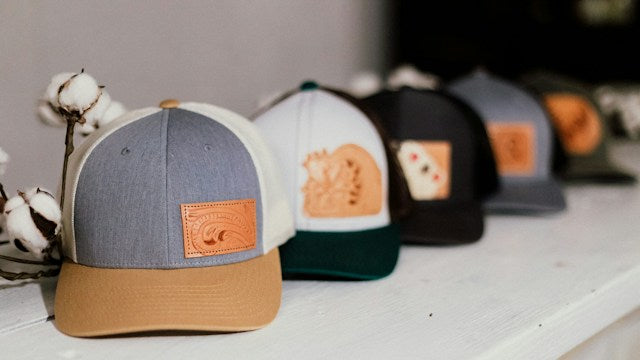I. Introduction
When it comes to customizing your hat, you have two popular options: embroidery and print. Each method has its unique characteristics and advantages, offering different ways to bring your designs to life.
Embroidery adds a tactile and textured element, with intricate stitching that creates a raised design on the fabric. On the other hand, print allows for vibrant colors and intricate details, offering a smooth and seamless finish. Whether you prefer the classic appeal of embroidery or the boldness of print, both options allow you to create a personalized and eye-catching custom hat that truly represents your style and message.
For today’s article, we will introduce some basics related to the differences, pros, and cons of embroidery and print for custom hat designs, let’s dive in!!
II. Embroidery for Custom Hats
Embroidery is a decoration technique, which uses a needle and thread to create words or images on products. It is not unique to hats, though it is the most common means of decorating headwear.
The advantage of embroidery is that it provides an extremely durable, vibrant imprint that will survive any number of wash cycles. The main disadvantages are that depending on the complexity and size of your design it can be substantially more expensive than other print methods.

III. Print for Custom Hats
Another technique is called printing, with the sublimation method, a design is printed onto transfer paper, which is then placed in a heat press with your hat. The heat and high pressure then transfer the design from the special paper onto the hat's fabric. It prints high-quality, full-color designs that are very durable.

IV. Durability and Longevity
The thread itself - Because the design uses a thread to draw the detail, it will withstand the rigors of daily wear and constant washing. We often say that an embroidered logo will outlast the garment itself. As you can see embroidery is a very durable way of decorating clothing.
Such situations of peeled prints are mainly related to vinyl and digital heat transfer printing. There are many reasons behind the cause of these but it is usually one main cause – the usage of cheap vinyl film material to save cost.
When it comes to an embroidered logo, there's a good chance the hat itself will be damaged before the logo is. However, there's a much higher chance that you will lose your hat before it ever starts to degrade.
V. Design Complexity and Detail
When embroidering a high stitch count design, choose a sturdy, non-stretch fabric. Examples include denim, canvas, duck cloth, faux suede, linen (heavy), and twill. Fabrics like these support the layering, highlighting, and shading in a complex design.
A 5000-stitch design can range from $30 to $60, while an 8000-stitch design may cost $50 to $80. For a 10000-stitch design, expect to pay $70 to $100 or more. These prices are approximate and can vary based on the design complexity.
Also, the more complex your design is, the more it will cost to print. This is because complex designs require more ink and more time to print. If you want to keep your costs down, consider simplifying your design or using fewer colors.

VI. Color Options and Vibrancy
An embroidering process won't reproduce certain smaller, more complicated details and subtle variations as well as other methods of reproduction. Needle and thread can only allow for hard-edge artwork. Fading, shading, and gradation are still very limited using embroidery.
When the garment is on your screen printing press, there are a lot of factors that play into how thick of a deposit of ink you lay down on your substrate. Generally speaking, the more ink you put down, the more vibrant it will appear and the more closely it will match your true ink color.
Colors are an important component of hand embroidery. It sets the tone for the entire piece of work. Bright colors add playfulness and cheerfulness, while dark shades can throw in sophistication.
VII. Customization Cost
Generally, embroidery is more expensive than screen printing. For large projects, some organizations choose screen printing instead. Additionally, you typically pay by the thread count, so embroidering large logos isn't the most cost-effective option.

VIII. Personal Style and Branding
Considering the desired aesthetic, brand image, and individual preference when choosing between embroidery and print customization
Aesthetics is a philosophical study of beauty. More recently, aesthetics has become more well-known for being nonsurgical treatments used to reduce the effects of aging. Aesthetics are often used to enhance a person's natural beauty.
Brand image is the customer's perception of your brand based on their interactions. It can evolve and doesn't necessarily involve a customer making a purchase or using your product or service.
Individual Preference is a way for an individual and/or. their family to take an active role and have more of a say in. choosing the service provider that best meets their unique.
IX. Conclusion
Embroidery is a classic technique that involves sewing a pattern into a fabric in a customized manner. There are many advantages of embroidery, including these: Longevity: Embroidery is more durable than screen printing, and the pattern will generally last longer when using this technique.
It’s important to consider factors such as durability, design complexity, color options, cost, and personal style when making a choice, also, prioritize quality and compatibility with the desired hat material for long-lasting and visually appealing custom hats.
That’s all for today, any new questions, please comment below and let us know!!





